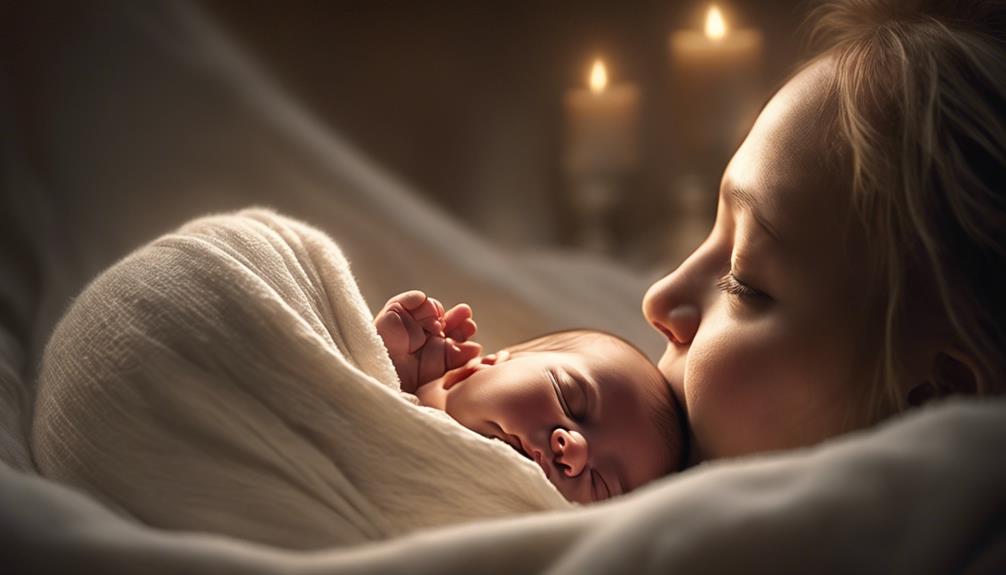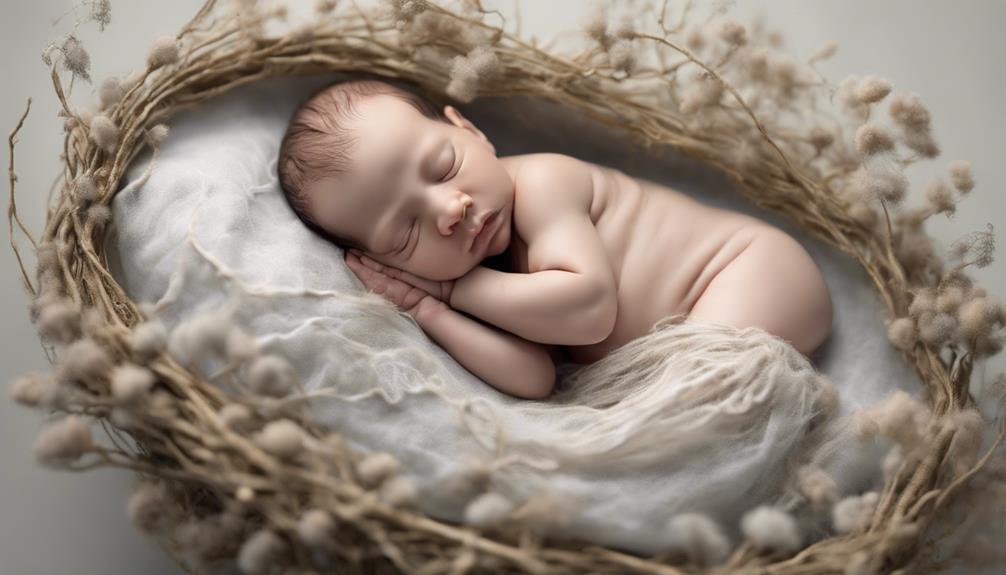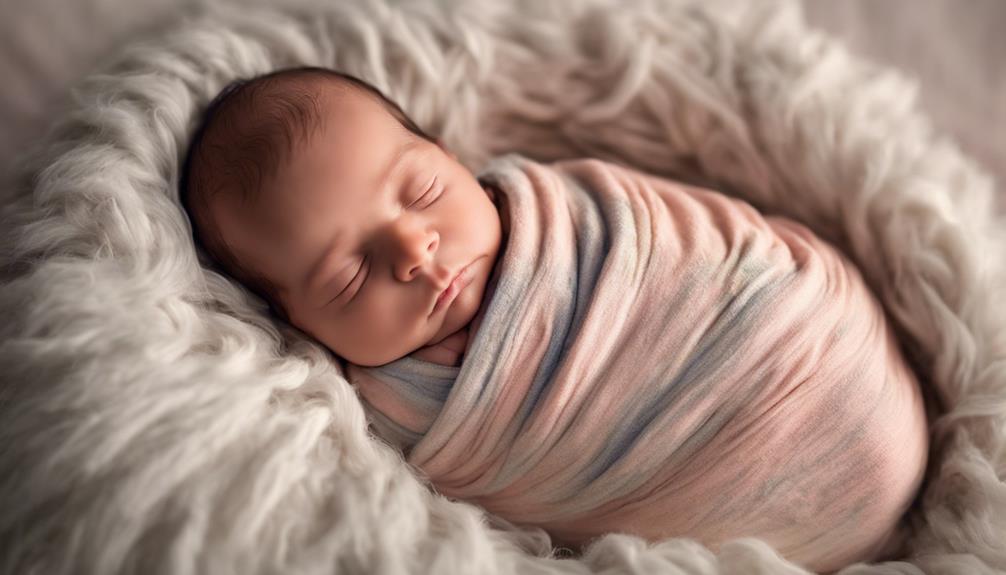As new parents, we all cherish those serene moments watching our precious newborns sleep, but what about when those tiny bodies start twitching? It's a scenario that can give rise to both curiosity and concern.
Understanding the nuances of newborn twitching during sleep is important in deciphering what's considered within the scope of normal and when it might warrant a closer look. So, let's explore this topic together and uncover the subtle distinctions that can offer reassurance or prompt further evaluation.
Key Takeaways
- Myoclonic twitches in newborns during sleep are normal and aid in neurological development.
- Vigilance for persistent twitching when awake is crucial to differentiate normal movements from concerning ones.
- Prompt medical evaluation is necessary for unusual or prolonged twitching episodes in newborns.
- Seeking timely healthcare advice can help in distinguishing between normal twitching and potential medical conditions.
Causes of Newborn Twitching
Newborn twitching during sleep stems from various factors, with the most common cause being normal myoclonic twitches associated with sensorimotor development. These myoclonic twitches are part of a healthy neurological process in newborns, reflecting the maturation of neural pathways responsible for motor coordination. Hypnagogic jerks and hiccups, also forms of myoclonus, are commonly observed during sleep in newborns. The twitching patterns exhibited by infants often align with the progression of specific motor skills such as head control and grasping, highlighting the important link between these twitches and developmental milestones.
Research indicates that these harmless twitches play an important role in the organization and refinement of neural circuits in the developing brain. However, it's essential for caregivers to differentiate between these normal twitches and seizure-related movements that may warrant medical attention. By understanding the origins of newborn twitching and their association with sensorimotor development, we can appreciate these movements as integral components of a healthy neurological maturation process.
Normal Twitching Patterns

During the sleep of newborns, normal twitching patterns are intricately connected to the development of brain circuitry and coordination of movements. These twitches play a critical role in shaping the infant's neural pathways and motor skills for the future.
Here are three key points to understand about normal twitching patterns in newborns:
- REM Sleep Activation: Twitches that occur during REM sleep trigger circuits in the brain responsible for limb awareness and sensorimotor skills. This activation is essential for the baby's brain to map out different body parts and understand their movements.
- Developmental Changes: As newborns grow and acquire new skills such as head support and reaching, their twitching patterns may evolve. These changes reflect the ongoing development of their motor capabilities and neural connections.
- Organizing Neural Pathways: Twitching movements during sleep help program the brain and organize neural pathways necessary for future motor skills. Different body parts such as legs, arms, toes, fingers, eyes, mouth, and cheeks may exhibit these twitching movements as the brain learns to coordinate their movements effectively.
Signs of Concern
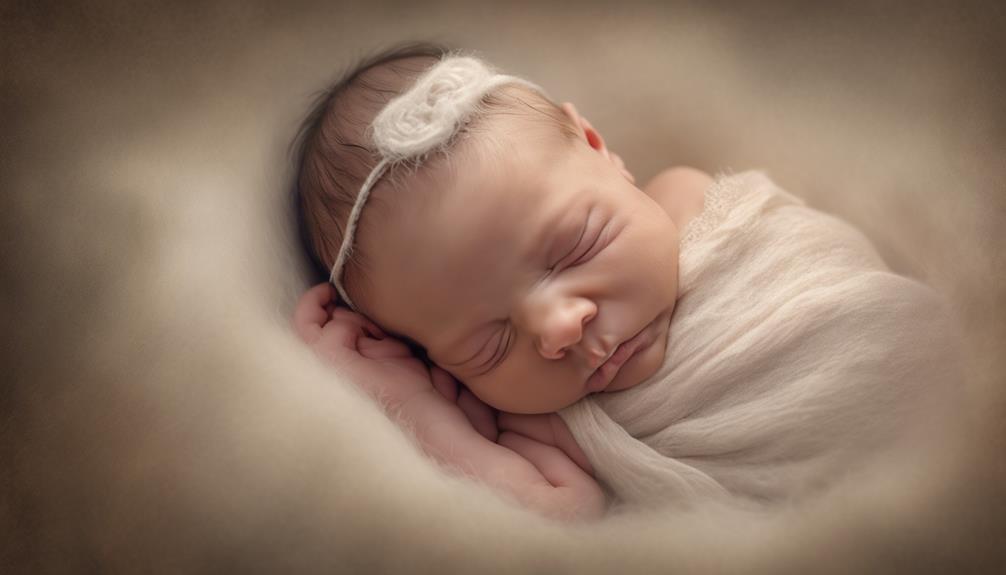
When observing a newborn's sleep patterns, it's important to be vigilant for any signs of concern related to twitching movements. While harmless myoclonic twitches during sleep are common and usually cease upon waking, twitching that persists when the baby is awake could signal seizure issues such as infantile spasms or epilepsy.
Distinguishing between normal sleep twitches and seizure-related movements can be challenging for parents, underscoring the importance of seeking medical attention if these twitches are accompanied by other concerning symptoms like breathing difficulties or vomiting. Prolonged or intense twitching episodes in infants might necessitate medical evaluation to rule out underlying health issues that could be contributing to the abnormal twitching patterns.
Being proactive in recognizing and addressing any unusual or persistent twitching behaviors in newborns can aid in early detection of potential seizure disorders or other medical conditions, ensuring timely intervention and appropriate management.
Medical Conditions to Consider
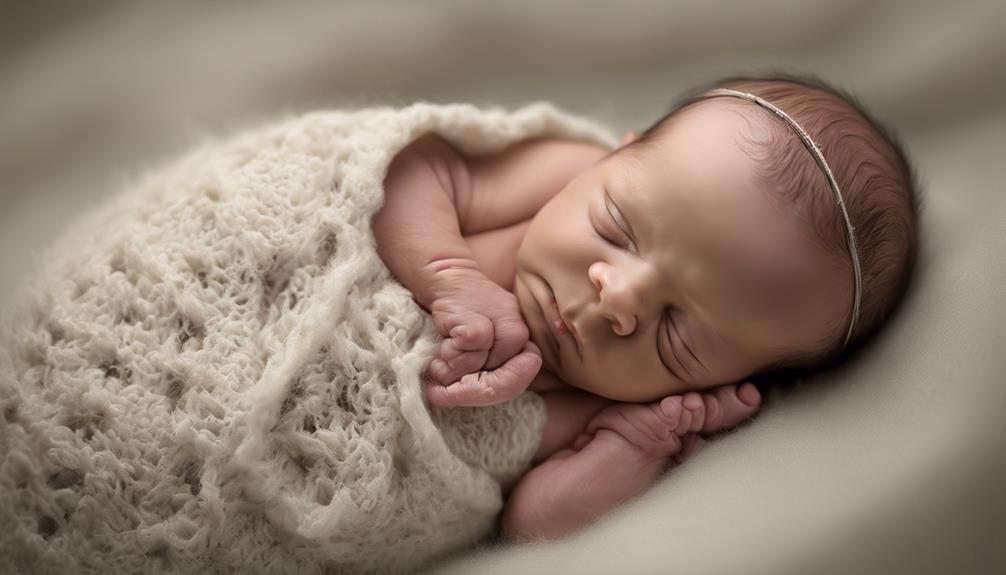
Observing twitching movements in newborns during sleep prompts consideration of various medical conditions that could be underlying factors. When evaluating newborn twitching, it's important to keep in mind specific medical conditions that may present in this manner:
- Infantile Spasms: These are a type of seizure that can have serious implications for a baby's development, potentially leading to conditions like autism if left untreated.
- Febrile Seizures: Although often harmless and brief, febrile seizures can impact consciousness and may recur within 24 hours, necessitating medical attention to address the underlying cause.
- Epilepsy and Developmental Conditions: Understanding the distinction between normal sleep twitches and seizure-related movements is crucial for providing appropriate medical intervention. Early recognition and management of epilepsy in infants is important for ensuring their well-being and development.
Seeking Healthcare Advice
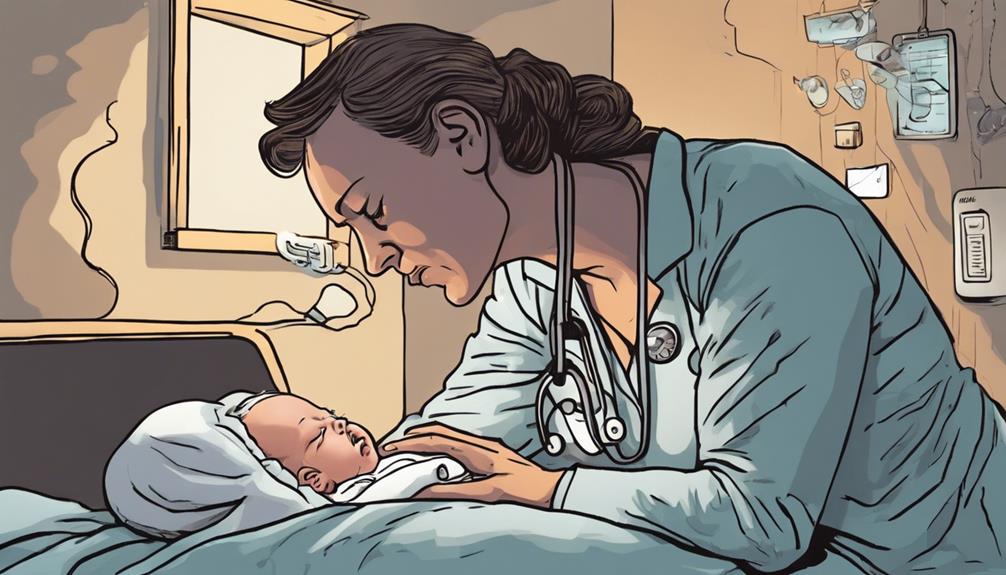
Upon noticing abnormal twitching patterns in a newborn during sleep, seeking healthcare advice promptly is vital to rule out underlying medical conditions.
If your baby's twitching persists even when awake, consulting a healthcare provider is essential to investigate seizure issues such as infantile spasms or epilepsy.
Continuous or unusual twitching episodes in newborns may indicate the presence of underlying medical conditions that require professional evaluation. Hence, healthcare advice should be sought if you observe persistent or concerning twitching episodes in your baby, especially during sleep.
Remember, prompt medical attention is necessary if you suspect that your baby's twitching during sleep may signify a more serious health issue.
Frequently Asked Questions
When Should I Be Worried About Baby Twitching in My Sleep?
If we notice unusual twitching during baby sleep, it is crucial to differentiate between normal movements and potential seizure activity. Seeking medical advice promptly can help clarify concerns and guarantee appropriate evaluation and treatment if necessary.
How Much Twitching Is Normal for a Newborn?
We observed that newborns typically experience frequent twitches during sleep, often involving various body parts. These twitches are linked to sensorimotor development, helping program the brain. Changes in patterns may correlate with developmental milestones.
How Do I Know if My Baby Is Having a Seizure in His Sleep?
We carefully monitor for signs of seizures during a baby's sleep, including rhythmic movements, staring, or changes in breathing. Seeking immediate medical attention if suspecting a seizure is critical for accurate diagnosis and timely treatment.
Is It Normal for Babies to Jerk Their Arms While Sleeping?
It's common for babies to jerk their arms during sleep, a sign of developing nervous systems. These movements aid brain coordination and motor skills. Excessive twitching may require medical assessment to rule out seizure issues.
Conclusion
To sum up, understanding the causes and patterns of newborn twitching during sleep is important for parents to distinguish between normal and concerning signs.
By being aware of the potential medical conditions associated with excessive twitching, such as seizures or epilepsy, parents can seek timely healthcare advice from a pediatrician.
Remember, a baby's twitching during sleep is a natural part of their development, but vigilance and informed decision-making are key in ensuring their well-being.

